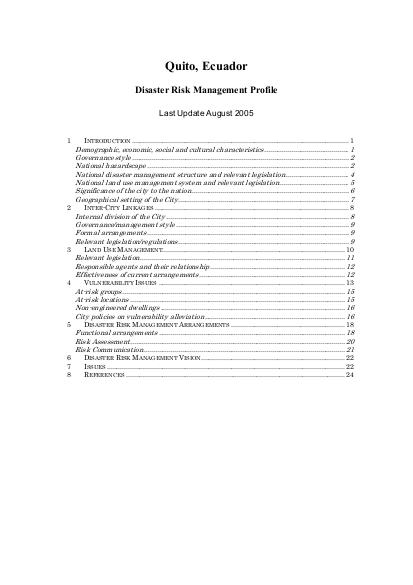
Located within an area of intense volcanic activity Quito, the capital city of the Republic of Ecuador, lies at 9,350 ft (2,850 m.) above sea level, on the lower slopes of the Pichincha Volcano in a narrow valley of the Andes mountain range. It is the oldest of all South American capitals, and its old town has preserved most of its colonial atmosphere. It is one of Ecuador's main two industrial centers, and the setting for the national government. The old town was named as UNESCO World Heritage Site in 1978. Quito is part of the Quito Metropolitan District (QMD), which has a total area of 424.717 hectares1. The urban area of the city of Quito occupies approximately 20.000 hectares. According to census figures, by the year 2001 the population of the DMQ had reached 1,842,201 inhabitants, out of which 1,414,601 (mainly concentrated in Quito) could be considered as urban population. Recent estimations show that the population will increase to 2,200,000 by year 2009. 51% of the population is female and 71% of the population is 15 years old or more in the city of Quito. The highest population density is about 168 inhabitants/ha in 5 clearly identified zones of the Quito Metropolitan District (QMD), but the mean can be estimated in 75 inhabitants/ha.
Resource collections
- UN Habitat - Urban Response Collection
- Urban Response - Urban Crisis Preparedness and Risk Reduction
- Urban Response Collection - Community Engagement and Social Cohesion
- Urban Response Collection - Economic Recovery
- Urban Response Collection - Environment and Climate Change
- Urban Response Collection - Housing, Land and Property
- Urban Response Collection - Urban Crisis Response, Recovery and Reconstruction
- Urban Response Collection - Urban Resilience